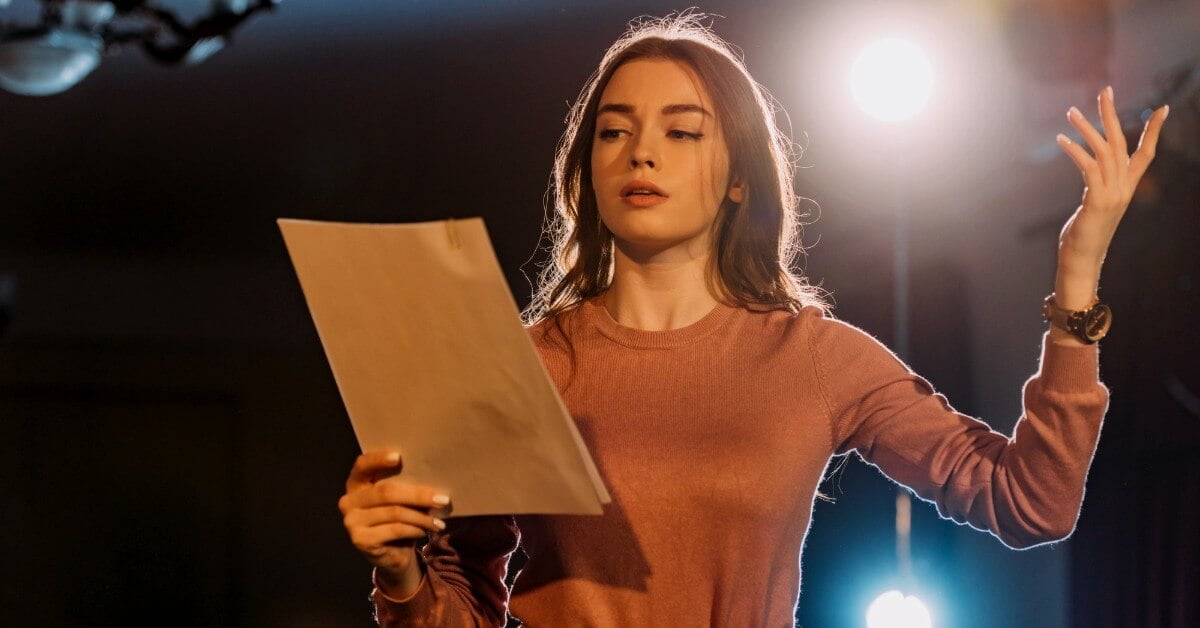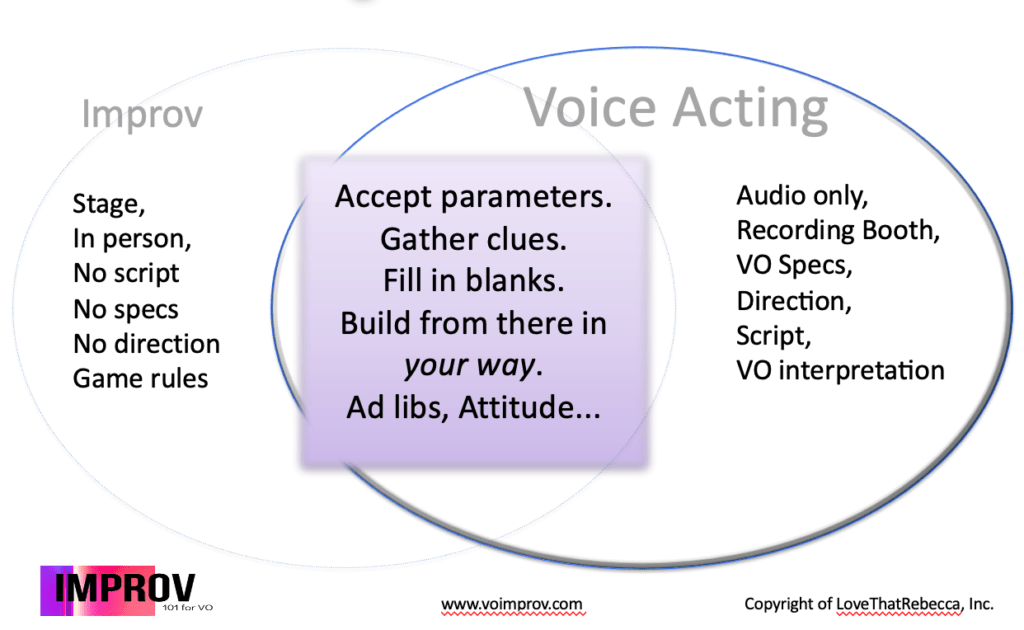
Isn’t voiceover acting and improvisation a conflict?
That would seem true. Pure improvisation does mean creating out of nothing with your imagination, with the only limitations being the ones you put on yourself. And voiceover actors get scripts to read into a microphone. Let’s explore the ways voice actors can use improvisation and find out if the conflicts can be worked through.
Starting with definitions…
The definition of improvisation from the Oxford American Writers thesaurus: extemporization, ad-libbing, spontaneity, lack of premeditation, compose, perform, or produce something such as music or a speech without preparation. We can argue about the meaning of “without preparation” but let’s agree to the concept of little forethought or almost zero preparation prior to the improvisation.
The definition of voiceover acting: an actor who provides and/or records voice to represent a character in animation, film, or television entertainment; or who provides/records voice within a project for non-entertainment purposes. In either case, the voice is not accompanied by the speaker’s image.
Can a voiceover actor use a script and improvise?
Here lies the apparent conflict that seems true with our basic understanding of the definitions above. To help illustrate that there is a middle ground, here’s a graph I developed for my 101 class showing how there is an overlap between these worlds.

In simple terms, the voiceover actor can improvise by doing two things: fully embracing the script and improvising details that aren’t provided within the script but fit with it.
Embracing scripts while improvising details?
Every script tells a story. A voiceover actor can use improvisation to imagine details that:
- create her world for telling that story with those specific words
- resound more authentically for her as an actor portraying a role
- support the words and the story wanted by the producer
A few other ways to improvise while using a script are simpler, well-known techniques or tricks.
Two ways to find a natural way to initiate the script opening:
- Use a running start. This means to start talking the words you imagine would be said prior to the opening of the script, using them to launch into the script.
- Ask a question that the first lines of the script answer.
Within a script, allow natural sounds that assist with natural flow/rhythm/pacing and which may possibly be edited out later:
- Non-verbal sounds like ‘ah’, ‘uh-huh’ or sighs
- Verbal ad-libs like ‘ha’, ‘so’ or anything else intuitive that fits
The ways in which a voiceover actor can improvise throughout a script can vary as much as actors are different.
Improvising for voiceover scripts doesn’t mean rewriting them.
The major point is there doesn’t need to be a conflict between improvising and the use of a script. The improvisation should support the script, filling in details that support the story and message. In a way, the improvisation is part of the acting technique, incorporated and embedded within the attitude, tone, volume and pacing of the spoken words.
Improvising supports acting technique and creating a ‘world’ that is generated from the words in the script.
The point for the voiceover actor is she wants to deliver the words as if she’s thought of them. Depending on the voiceover script, it may or may not provide that perspective. Voiceover scripts often leave lots of space for the actor to fill in details and “live within the ink”.
What sort of situation would create her to speak these words if that perspective isn’t provided? Regardless of the variability between actors, the practice of improvising details can assist her to explore and then determine the most authentic ‘world’ with the script.

